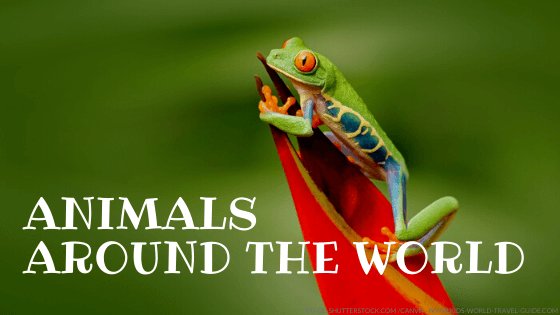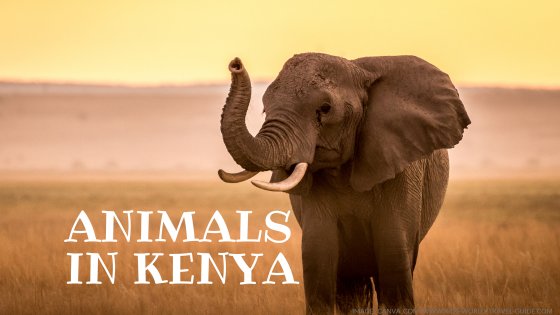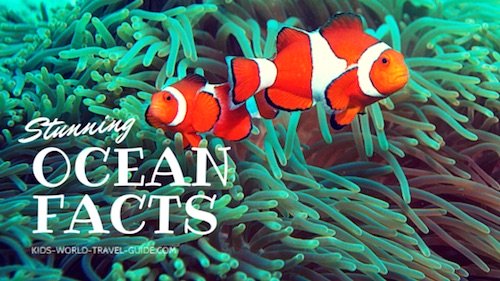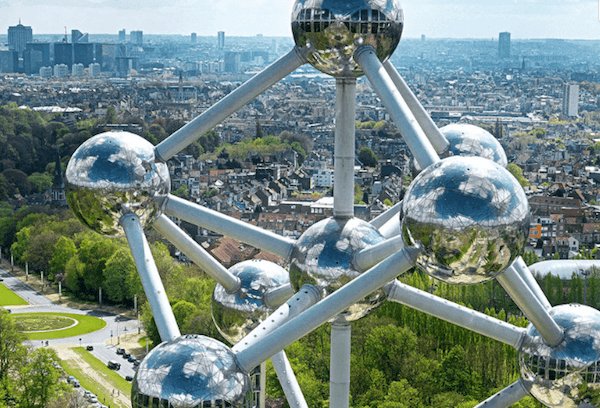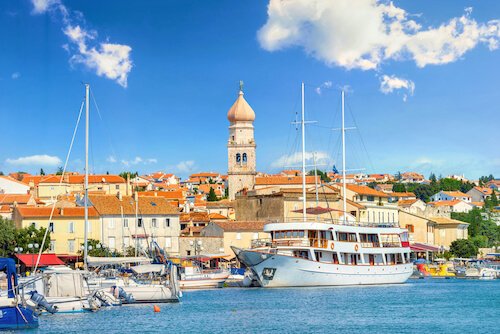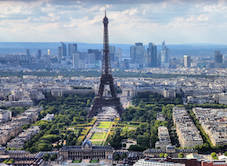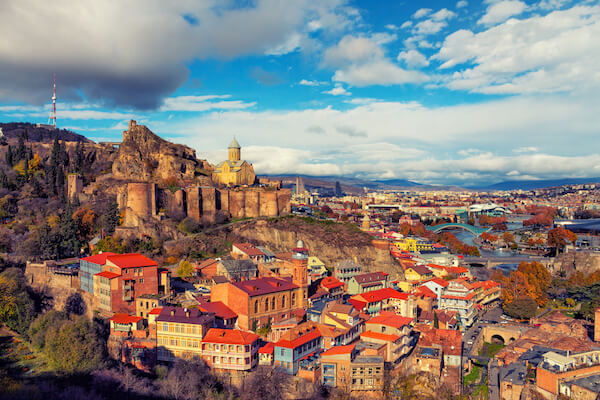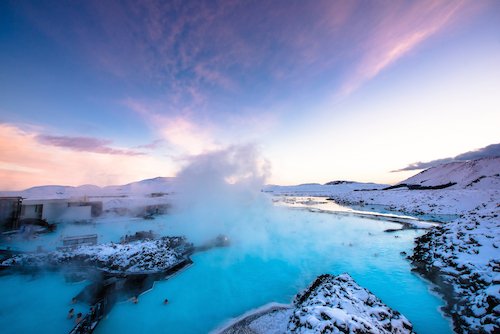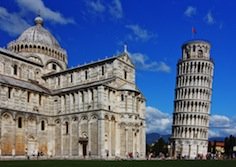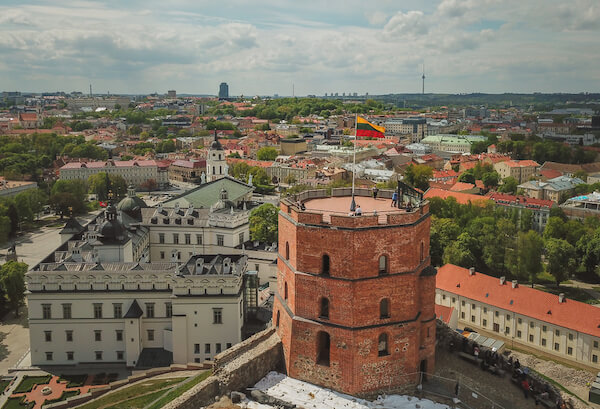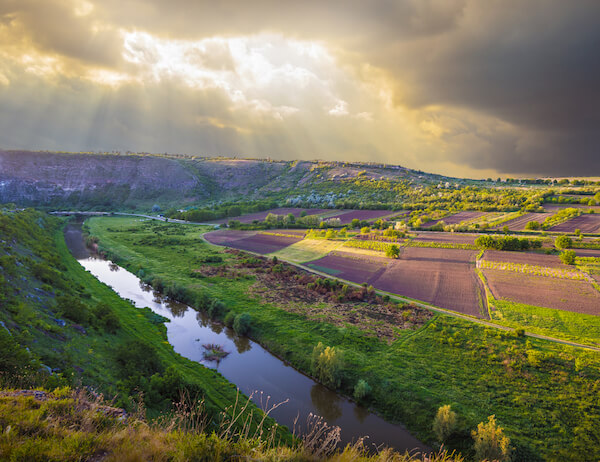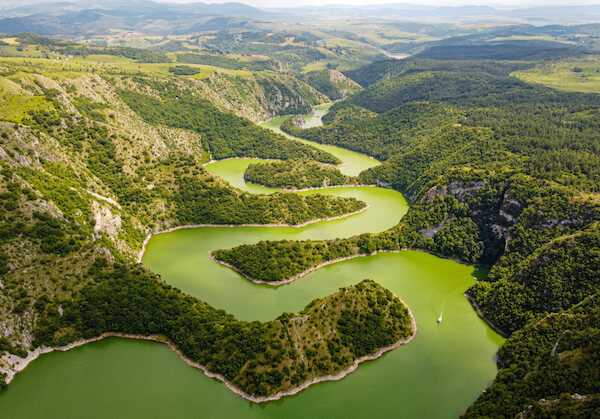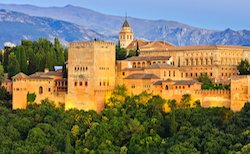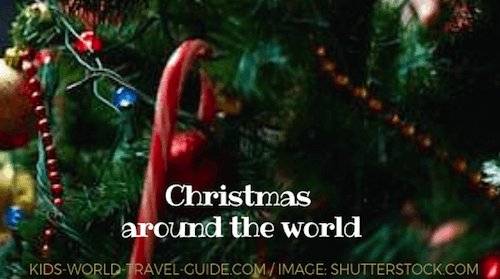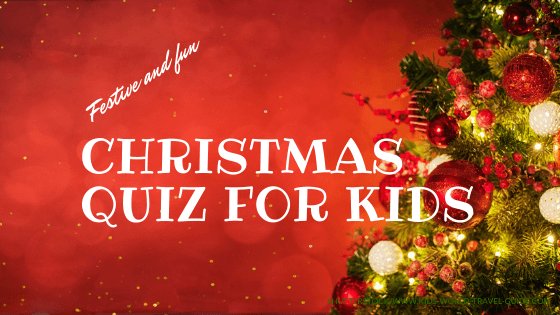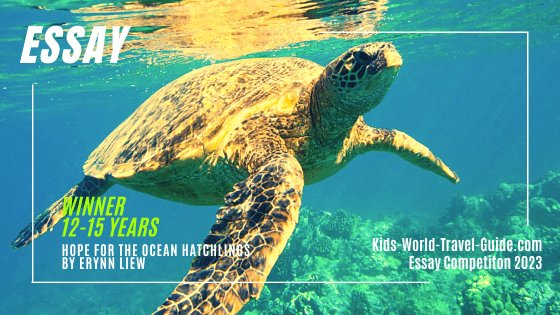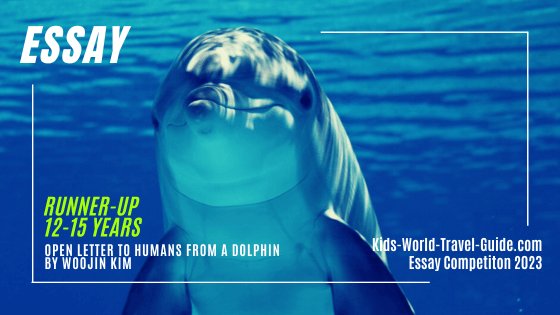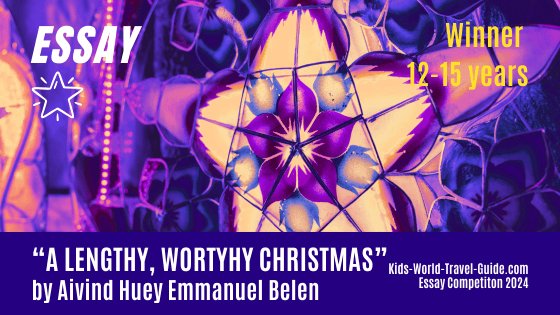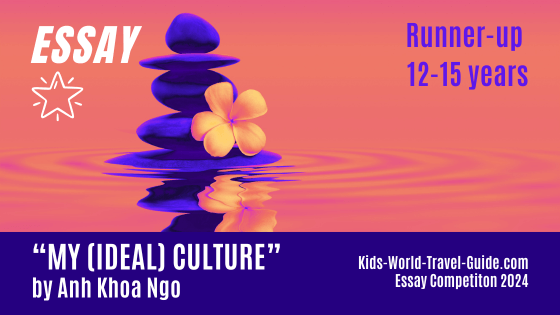- Homepage
- Animals around the world
- Animals in Europe
Animals in Europe
Which 20 Animals in Europe should you have heard about? There are about 260 species of mammals including 44 species of marine mammals, 900 species of birds, 151 species of reptiles and 85 species of amphibians living across Europe. Some of these species only exist on the European continent.
Here we share insights about unique and common European wildlife species, their habitats, diets and behaviour. We hope these animal facts will provide you with some basic knowledge about the fascinating wildlife of the European continent.

Animals in Europe face threats such as habitat loss and poaching as in other parts of the world.
Though in Europe, the main threats to wildlife are the growing cities and increased space of urban environments as well as expansion of agricultural land. Illegal poaching is happening as well in Europe where wolf or bear populations are hunted for food or as trophies.
Conservation efforts in Europe show much success especially with rewilding natural habitats and protecting endangered species or with introducing species into a new habitat.
1. European Roe Deer
European roe deer are found in a wide range of environments from open woodlands, meadows and fields to shrublands and near the edges of forests.
Roe deer live all across Europe and are one of the most widespread and common deer species in Europe.
 European roe deer
European roe deerEuropean roe deer are a relatively small deer species. They only stand about 60-75 cm/ 24-30 inches tall at the shoulder. The diet of roe deer consists mainly of leaves, shoots, grasses and the tender parts of shrubs and trees. During the summer, they may also consume fruits and berries.
These deer live typically in small family groups with a mother and her fawns or they live solitary, which means alone.
The antlers of roe deer are relatively small and have three points, therefore they are often referred to as "three-pointers". The roe deer sheds and regrows their antlers every year!
2. Brown Bear
Brown bears are found in the dense forests and remote northern or central regions of Sweden, Norway, and Finland. This region is home to the Scandinavian brown bear population, which is the largest in Europe.
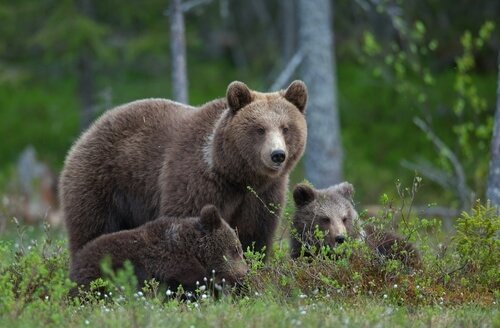 Brown bear in Russia
Brown bear in RussiaBears also occur in mountainous regions of the Carpathian mountains in Eastern Europe, the Italian Apennines or the French and Spanish Pyrenees.
The large mammals grow up to 3 m/ 10 ft long. Brown bears are omnivores and feed on berries, fish, and mammals.
The solitary animal hibernates during winter.
3. Wolf | Animals in Europe
Wolves can be found in a variety of habitats in Europe and they can easily adapt to new environments. Wolves live in dense forests to open grasslands, mountains, and even some urban areas.
Russia and Romania have the largest wolf populations in Europe. Wolves also live in the northern and central parts of Norway and Sweden, the Italian and French Alps as well as the Balkan peninsula.
 Wolf in the Italian Alps
Wolf in the Italian AlpsEuropean wolves are about 100-130 cm/ 39-51 inches long, excluding their tail, and stand around 70-80 cm/ 28-31 inches tall at the shoulder. Males are generally larger than females. Adult European wolves weigh between 25 to 40 kilograms/ 55 to 88 pounds.
Wolves are carnivorous predators and have a diverse diet. Their prey includes deer and wild boar as well as smaller mammals and birds.
4. European Hare
The European hare can be seen hopping around grasslands and cultivated fields all over the continent.
The hare is up to 70 cm/ 28 inches long and is one of the largest of the hare species. The European hare has two long ears that grow up to 11 cm/ 4.3 inches in length.
 European hares
European haresThe herbivores graze on grass and herbs, flowerbuds and occasionally on field crops.
European hares are active at dawn and dusk and spend a lot of the time searching for food. And these hares eat a lot! A pair of them can eat more food than one single sheep can eat!
5. Alpine Ibex | Animals in Europe
Alpine ibex live in the steep and rocky alpine regions of Europe. They are found in mountainous areas with cliffs, ledges, and steep slopes of various European mountain ranges including the Alps and the Caucasus Mountains.
Adult male Alpine ibex, known as bucks, weigh between up to 120 kg/ 265 lbs and stand about 90 to 101 cm/ 35 to 40 inches tall at the shoulder. Females are smaller and weigh less.
 alpine ibex
alpine ibexAlpine ibex feed mainly on grasses, herbs, and shrubs. Their diet changes with the seasons. During winter, when fresh vegetation is scarce, they may browse on woody plants, lichen, and moss.
Ibex are excellent climbers and move well on rocky terrain. Both males and females of the species have horns that curve backwards. These horns can grow to impressive lengths of up to 100 cm/ 39 inches.
6. Chamois | Animals in Europe
Chamois are also mountain animals and live in the alpine regions of Europe. They are found mainly in the Alps in Switzerland, France, Italy, Austria and Slovenia as well as in the Pyrenees, the Carpathian Mountains and the Balkans.
The medium-sized herbivores are much smaller than the Alpine ibex and adult males stand about 70 to 80 cm /28 to 31 inches tall at the shoulder.
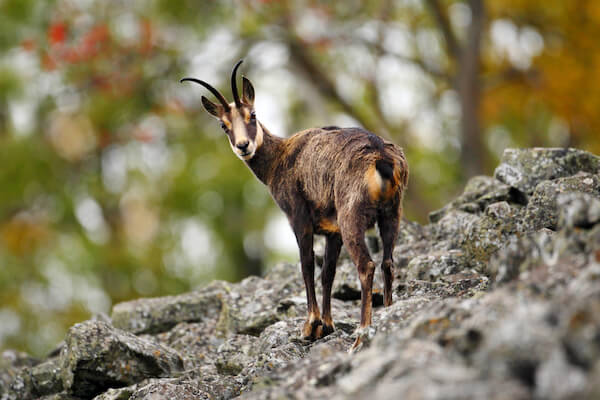 Chamois
ChamoisBoth males and females of the species have horns, but those of males are larger and more curved and can grow up to 25 cm/ 10 inches in length.
The diet of the chamois consists of grasses and alpine vegetation. The chamois are exceptional climbers, as they often search for food on steep cliffs and are generally found at high altitudes.
7. Eurasian Lynx
Eurasian lynx live in dense forests, in mixed woodlands and in alpine regions across Europe. The once endangered animals can now be found from Western Europe, including Scandinavia and the Alps through to Russia.
Eurasian lynx are medium-sized big cats. Adult males, known as toms, can weigh between up to 30 kg/ 66 lbs and stand up to 75 cm/30 inches tall at the shoulder.
 Lynx in Italy
Lynx in ItalyEurasian lynx have tufted ears, which means that their ears are topped with long black tufts of hair.
Eurasian lynx are carnivorous predators. The solitary animals are excellent hunters. Their diet consists of mammals as large as roe deer, red deer, and chamois, but they also hunt for smaller mammals and birds. They are skilled hunters who use ambush tactics to stalk and pounce on their prey.
8. Red Fox | Animals in Europe
European red foxes live across the entire European continent, from Portugal in the west to Russia in the east. They live in diverse habitats from forests to urban areas.
 Red fox in Croatia
Red fox in CroatiaRed foxes are about 60-90 cm/ 24-35 inches long. They have a long bushy tail which is up to 45 cm/ 18 inches long.
The omnivorous mammals eat small mammals such as rabbits or rodents, insects, birds, and plants.
Red foxes are nocturnal animals, which means they are most active during the night. These foxes have excellent night vision and a keen sense of smell, which helps them locate prey in the dark.
9. European Hedgehog
European hedgehogs are highly adaptable and can be found in a wide range of habitats, including woodlands, grasslands, gardens, urban areas, and hedgerows.
They create nests in dense vegetation and often make use of natural shelter like fallen leaves.
European hedgehogs are widespread across most of Europe, excluding the far north and some Mediterranean islands.
The small mammals only grow up to 30 cm/ 12 inches in length. Hedgehogs are covered in spines. When threatened, they can curl into a ball to protect themselves.
 Hedgehog
HedgehogHedgehogs are omnivores and eat all kinds of food including insects, earthworms, slugs, snails and even frogs. They are also known to eat fruits, berries.
As night active animals, hedgehogs have a keen sense of smell and hearing to help locate prey. They are solitary animals.
10. European Reindeer
European reindeer are found in the northern regions of Europe and live in the Finnmark and Lapland regions in Norway, Sweden and Finland. Reindeer are also found in the northern parts of Russia, including the Kola Peninsula.
The large mammals stand tall as bulls grow to about 100 to 120 cm/ 39 to 47 inches at the shoulder and can weigh between 180 to 300 kg/ 400 to 660 pounds. Bulls are adult male reindeer. Adult females, known as cows, are slightly smaller. Both males and females have antlers.
 Reindeer in Sweden
Reindeer in SwedenReindeer are herbivorous animals, and their diet varies depending on the season. During the summer months, they graze on a variety of plants, including grasses, sedges and herbs. In the winter, they feed on lichens, mosses and the twigs and leaves of shrubs and trees.
Some European reindeer populations undertake long-distance migrations during the year and cover many hundreds of kilometers to find suitable grazing areas.
European reindeer are very important to the indigenous Sámi people of the northern regions.
11. European Bison | Animals in Europe
European bison are also known as wisents. These heavy land mammals prefer forested habitats with open meadows and access to water. They are often found in lowland and upland forests.
Bison were once widespread in Europe from France to Ukraine. Today bison live in a small groups in Eastern Europe, mainly in Poland, Belarus, Ukraine, and Russia.
 Bison in Poland
Bison in PolandEuropean bison are among the largest land animals in Europe and are the heaviest wild animal in Europe. Adult males can weigh between 800 to 1,000 kg/ 1,800 to 2,200 pounds. They can grow up to 1.9 to 2.3 m/ 6.2 to 7.5 ft high at the shoulder and have a length of up to 3.6 m/ 12 ft.
European bison are herbivores and primarily graze on various plant species. Their diet consists of grasses, herbs, shrubs and the leaves of deciduous trees. During the winter they may also browse on twigs and bark.
Wisents live in small herds, typically composed of females and their young. Male bison tend to be more solitary and join the herds during the breeding season. Due to successful conservation efforts there are now about 7,500 bison living in Europe.
12. European Herring Gull
European herring gulls are found across Europe, including the British Isles, Scandinavia and the Baltic Sea region. They are also found along the coastlines of the Mediterranean Sea. They are common wildlife along coastlines, estuaries and lakeshores. They also thrive in urban and suburban areas, where they scavenge for food at garbage dumps, fishing harbors, and parks.
Herring gulls are large and robust birds with a wingspan of up to 155 cm/ 61 inches. Adult birds can weigh up to over 1 kg/ 2.2 pounds.
 European herring gull
European herring gullEuropean herring gulls are opportunistic omnivores. Their diet includes fish, invertebrates, small mammals, bird eggs and carrion.
They are skilled scavengers and are often seen feeding on human food scraps in coastal towns and cities. The gulls are also known to catch fish by plunge-diving from the air. They can be recognised by their distinctive calls.
13. Wild horses | Tarpan horses
The only free roaming wild horses live in the Rhodope mountains of southern Bulgaria.
However, the wild descendants of tarpan horses have been reintroduced to the area only about ten years ago.
 Tarpan horses
Tarpan horsesThe tarpan horses were extinct but were introduced after a special breeding programme. The last of this horse species lived in the Ukraine and the last tarpan died in the 1909 in a Russian zoo.
Mongolian wild horses are also reintroduced in various European countries such as Czech Republic, Spain, France or the Netherlands, however, these species live in fenced in areas. These horses are also called Przewalski's horses and were reintroduced to landscapes that resemble their natural habitats. These areas often include open grasslands, steppes, and meadows with access to water sources.
The wild horses are relatively small compared to some domestic horse breeds. The colour of their fur is grey to grey-brown to blend better into the environment.
These wild horses are herbivores and graze on grasses, herbs, and other vegetation. They may also browse on shrubs and woody plants when grasses are scarce in winter.
About 4,000 tarpan horses live in Europe today.
14. Common European Adder
The common European adder can be found from western Europe including the British Isles and Scandinavia to eastern Europe. However, these adders do not live in Ireland, Iceland and some Mediterranean islands.
These snakes are encountered in heathlands, moorlands, woodlands, grasslands and even some urban areas. There they prefer areas with suitable cover, such as tall grass, rocks and fallen leaves, where they can hide and ambush prey.
Common European adders are relatively small venomous snakes. Adult females are larger than males and can grow up to 90 cm/ 35 inches in length. However, male adders are more colourful and often have a zigzag pattern along their backs.
 European adder
European adderThe European common adder is also referred to as European viper. This is Europe's only venomous viper, though its venom is not usually fatal to humans.
They feed on a diet of small mammals, such as mice, and birds, bird eggs, and amphibians.
European adders give birth to live young rather than laying eggs.
15. European Blue Tit | Animals in Europe
European blue tits are small songbirds. They are commonly seen in woodlands, parks, gardens and urban areas. Blue tits build their nest in all kinds of sites including, nesting boxes or tree hollows.
European blue tits live throughout Europe, including the British Isles, Scandinavia, continental Europe, and even parts of Asia, such as western Russia and Iran. They are also found on the North African coast.
The birds have distinctive blue plumage on the crown, wings, and tail. They also spot a yellow breast and white cheeks. Blue tits grow to about 12 cm/ 4.7 inches and have a wingspan of around 18 cm/ 7.1 inches.
 European blue tit
European blue titThe diet of blue tits includes insects, spiders and caterpillars as well as seeds, nuts and sometimes berries or small fruits.
In the milder climates of Europe, blue tits are found throughout the year. They only migrate from the northern areas of Europe in winter to the warmer regions of the continent.
16. European Badger
European badgers live in many European countries, except in Scandinavia, and are found in woodlands and forests, grasslands and farmland. They make their burrow systems, called setts, also urban areas, in gardens or on golf courses.
European badgers are medium-sized carnivores. They measure up to 90 cm/ 35 inches in length and have a short tail. Badgers have a distinctive black-and-white face with dark stripes.
 European badger drinking from a creek
European badger drinking from a creekBadgers are omnivores and feed on insects, grubs, small mammals, birds, amphibians, fruits and berries. Earthworms are their favourite food.
The nocturnal creatures have an excellent sense of smell and hearing which helps them locate food at night.
The badgers of one social group communicate with scent. Scent is also used for marking their territory.
17. Iberian Lynx | Animals in Europe
The more brightly coloured Iberian lynx once lived in Spain and Portugal but today, this is one of the world's most endangered cat species.
Iberian lynx populations are now only found in isolated areas in southern Spain in open woodlands and grasslands with sufficient cover for stalking prey.
Their main prey is the European rabbit, thus they seek areas where rabbits are found. Occasionally they also feed on rodents, birds and small mammals.
Iberian lynx are medium-sized cats that weigh between 10 and 15 kg/ 22 and 33 lbs.
 Iberian lynx in Spain
Iberian lynx in SpainThe Iberian lynx has a spotted coat, tufted ears, and a short tail. They look similar to the Eurasian lynx but they can be distinguished by their coat pattern and colour.
The Iberian lynx is a critically endangered species due to habitat loss, diseases and a decline in European rabbits. There are special conservation breeding programmes as well as habitat restoration programs and luckily, their numbers have recovered slightly. Today there are about 1,100 animals of this species.
18. Mediterranean Monk Seal
Mediterranean monk seals are found in coastal and marine habitats within the Mediterranean Sea, the northeastern Atlantic Ocean and parts of the Black Sea. The seals live in sea caves, rocky shorelines, remote islands and sandy beaches, where they can rest, breed and give birth.
The Mediterranean monk seal is one of the most critically endangered seal species in the world.
 Mediterranean monk seal
Mediterranean monk sealThe medium-sized seals measure between up to 2.8 m/ 9.2 ft in length and weigh around 220 to 300 kg/ 485 to 660 lbs.
The monk seal's diet includes fish, squid and octopus. Monk seals are skilled divers and can reach depths of up to 200 m/ 656 ft to search for food.
They have a sleek, dark grey or brownish-black fur and a pale patch on their belly. Their name "monk seal" comes from the folds of skin around their neck, which resemble a monk's cowl.
19. Harbour Porpoise
European harbour porpoises are widely distributed across the coastal waters of Europe. They are common sea creatures from the eastern Atlantic Ocean to the North Sea and the Baltic Sea. Their range extends from the northern coasts of Norway and the British Isles to the western coasts of France and Spain.
 Harbour porpoise
Harbour porpoiseHarbour porpoises prefer shallow coastal areas and estuaries, making them well-suited to the coastal waters of Europe. They are considered the most common cetacean species in European waters. Cetaceans include whale, dolphin and porpoise species.
European harbour porpoises are small and reach lengths of up to 1.9 m/ 6.2 ft and weigh up to 85 kg/ 187 pounds. These porpoises are among the smallest cetaceans in European waters.
Harbour porpoises are carnivores and feed on a diet of small fish, including herring, cod and sand eel. They use echolocation to locate and hunt their prey. They make clicking sounds and listen for echoes to detect fish and other objects in the water.
20. European Mantis | Animals in Europe
The European mantis is native to Europe but has been introduced to North America, where it is sometimes called the "praying mantis." In Europe, mantises are found in many countries, including France, Italy, Spain, Greece and parts of eastern Europe.
Mantises are generally found in grasslands, meadows, gardens and fields. They prefer areas with tall vegetation where they can easily blend in while waiting to ambush prey.
European mantises are relatively large compared to other mantis species and can grow up to 7.5 cm/ 3 inches in length. Females are generally larger than males. Mantises have a long and slender body with long spiked forelegs they use for capturing prey.
 European mantis
European mantisThe carnivore's diet consists of crickets, grasshoppers and small insects such as flies and moths.
Mantises are skilled hunters and have excellent eyesight. They strike with lightening speed.
European mantises come in various color variations, including shades of green and brown, which allow them to blend into their surroundings. The camouflaging coloration helps them remain hidden from both predators and prey.
Popular Pages
Useful Resources | Animals in Europe
- Rewilding Europe. "Bringing back the Bison." RewildingEurope. Last accessed 22 September 2023
- Rewilding Rhodopes. "Konik." RewildingRhodopes. Last accessed 22 September 2023
- WISE Marine. "Marine Mammals." EEA. Last accessed 25 September 2023
Winning Essays 2025
|
Please take note
|
